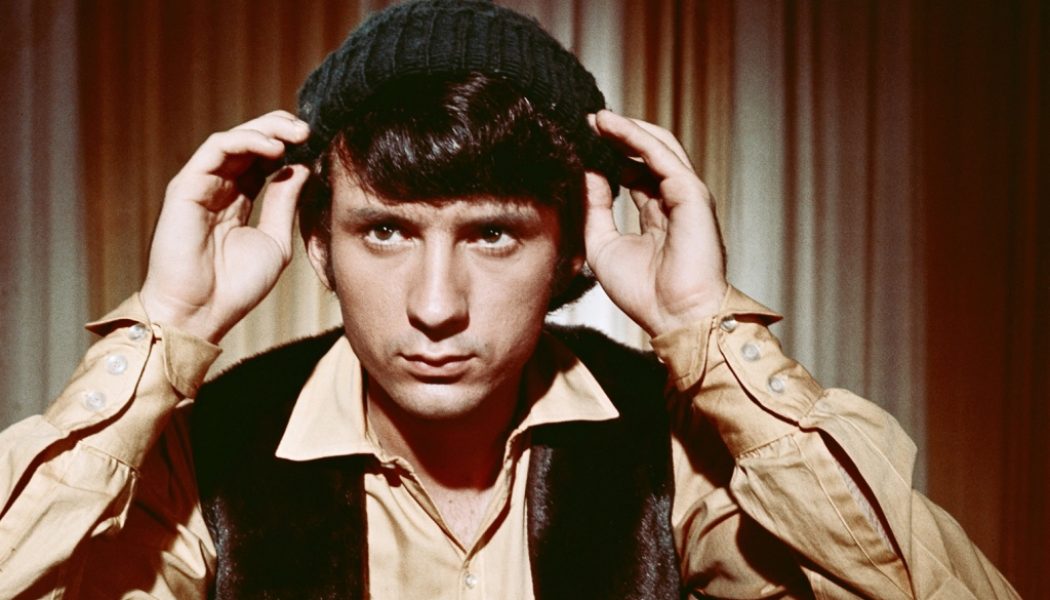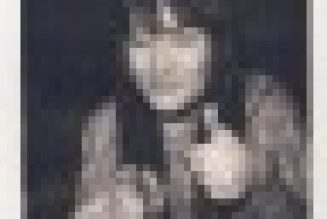
If you want someone to extol the late Mike Nesmith’s virtues as a songwriter, you don’t have to look much further than the man who’s been standing beside him onstage for many of the past five and a half decades.
“Nes is a great songwriter, always has been,” says Monkees mate Micky Dolenz, who most recently toured with Nesmith as The Monkees Present the Mike & Micky Show and who earlier this year released the album Dolenz Sings Nesmith. “You’ve got to credit him; He was writing incredible stuff from the get-go. He was way before some of the other country electric rock entities. He was way ahead of them in that kind of sound. He was doing that stuff in the ’60s, and I don’t think he’s ever gotten as much credit as he should as a singer-songwriter.”
Nesmith — who died Friday (Dec. 10) at the age of 78 from natural causes — certainly got some due for his writing prowess during his life and even handed a big hit, “Different Drum,” to Linda Ronstadt and her band the Stone Poneys. Steering 15 albums outside of his Monkees work, Nesmith had more top-shelf material than most casual fans realize. These are a dozen of the best that speak to his under-recognized acumen as a composer.
“Mary, Mary”
The 1966 track has had a long and winding road, first recorded by the Paul Butterfield Blues Band for its landmark East-West album in 1966 at the suggestion of producer Barry Friedman as a possible hit single. The Monkees also took a crack at the song, recording a more polished version in Hollywood with members of the Wrecking Crew for the More of the Monkees album in 1967. It was a hit in other countries (top 5 in Australia), but was not released as a single in the U.S. — save for a cereal box cut-out in 1969. It was also heard during five episodes during the first season of The Monkees. Run-D.M.C., of course, sourced it for a hit from its 1988 Tougher Than Leather album, with some new lyrics and sampling some of Micky Dolenz’s vocals.
“Different Drum”
Nesmith wrote the song back in 1964, and it was recorded by the Greenbriar Boys in 1966. Monkees fans heard a bit of it during the Dec. 19, 1966 episode of The Monkees TV show, but it was turned down by the group’s producers. Nesmith handed it off to the Stone Poneys, who turned it into a No. 13 hit on the Billboard Hot 100 the following year. Nesmith, meanwhile, returned to the song for his 1972 solo album And the Hits Just Keep on Comin’, adding an additional verse that wasn’t in the Stone Poneys version.
“Sweet Young Thing”
Writing in New York, Carole King and Gerry Goffin were in the Monkees’ camp from the get-go, thanks to music supervisor Don Kirshner. Nesmith got to collaborate with the pair on this quick (under two minutes) psychedelic-tinged stomper from the 1966 debut album The Monkees, for which he also provided a lead vocal.
“Sunny Girlfriend”
Nesmith broke through the Monkees’ gatekeepers to put five songs as a writer or co-writer on the group’s third album Headquarters. This is the best of the bunch, an uptempo, jangling country rock gem that would fit comfortably on any Americana format now.
“Listen to the Band”
Nesmith’s brassy anthem was featured in the 1969 TV special 33 1/3 Revolutions Per Monkee and included on that year’s album, The Monkees Present — the group’s first as a trio after Peter Tork left the band. Recorded in Nashville, it’s the first time a Nesmith lead vocal was featured on the A-side of a Monkees single, and the song hit No. 63 on the Hot 100. It was also the penultimate song Nesmith and Dolenz performed during their 2021 farewell tour, which wrapped up Nov. 14 at the Greek Theatre in Los Angeles.
“Circle Sky”
The Monkees’ Head was easier consumed in component parts than in its psychedelic and only semi-sensical whole. But this Nesmith contribution to the soundtrack stands up no matter how it’s heard or seen; it’s a raw and urgent lo-fi rocker that was as punky as anything that was coming out of New York or Detroit at the time. A more polished (but not quite as pleasing) version can be found on the Monkees’ 1996 reunion album Justus, too.
“Propinquity“
A nice break for Nesmith — a track on the same Nitty Gritty Dirt Band album (Uncle Charlie & His Dog Teddy) that included “Mr. Bojangles.” That troupe’s harmonic convergence served the cleverly phrased love song (“I’ve known you for a long time/But I’ve just begun to care”) well, and Nesmith has offered up his own versions on a selection of solo compilations over the years.
“Joanne”
Nesmith and his First National Band had a No. 21 hit with this weepy country ballad in 1970, the second single from the group’s Magnetic South album. The airy, mid-tempo track featured Nesmith’s keening vocal, which traipsed toward the edge of yodeling, as well as O.J. “Red” Rhodes’ pedal steel. It was a concert staple for the group and Nesmith, and Andy Williams covered it that same year on his The Andy Williams Show album.
“Silver Moon”
Nesmith and the First National Band were on a bit of a roll in 1970, following “Joanne” with a second consecutive charting single (No. 42) that was more uptempo than its predecessor. Taken from the group’s Loose Salute album, “Silver Moon” spices its twang with a light Tejano flavor drawn from the Houston-born Nesmith’s Texas roots.
“Marie’s Theme”
[embedded content]
The conceptual conundrum of Nesmith’s ambitious 1974 multimedia piece The Prison is second only to the Monkees’ Head for trippy impenetrability and certainly swerved from the country-rock path he was pursuing with the First National Band. “Marie’s Theme” is the closest to the course, however — a gently melodic and vividly drawn country-folk character portrait that, in its late-album position, is almost blissful.
“Cruisin’”
This funky rock track appeared on Nesmith’s 1979 solo album Infinite Rider on the Big Dogma but became better known as part of his Grammy Award-winning Elephant Parts video piece, which put some flesh to the characters of Lucy, Ramona and Sunset Sam.
“I Know What I Know”
Nesmith released versions of this aching love song as a download from his website before it appeared on the Monkees’ lauded Good Times! album in 2016, still in spare form accompanied only by the late Adam Schlesinger on piano, bass, guitar and Chamberlin synthesizer strings. It’s plain-spoken (“I know what I know/I see what I see/I love what I love/It’s you that I love”) and direct, with a sweet-tempered vulnerability that stands apart from the highly-produced power pop energy of the rest of the group’s final studio album.









